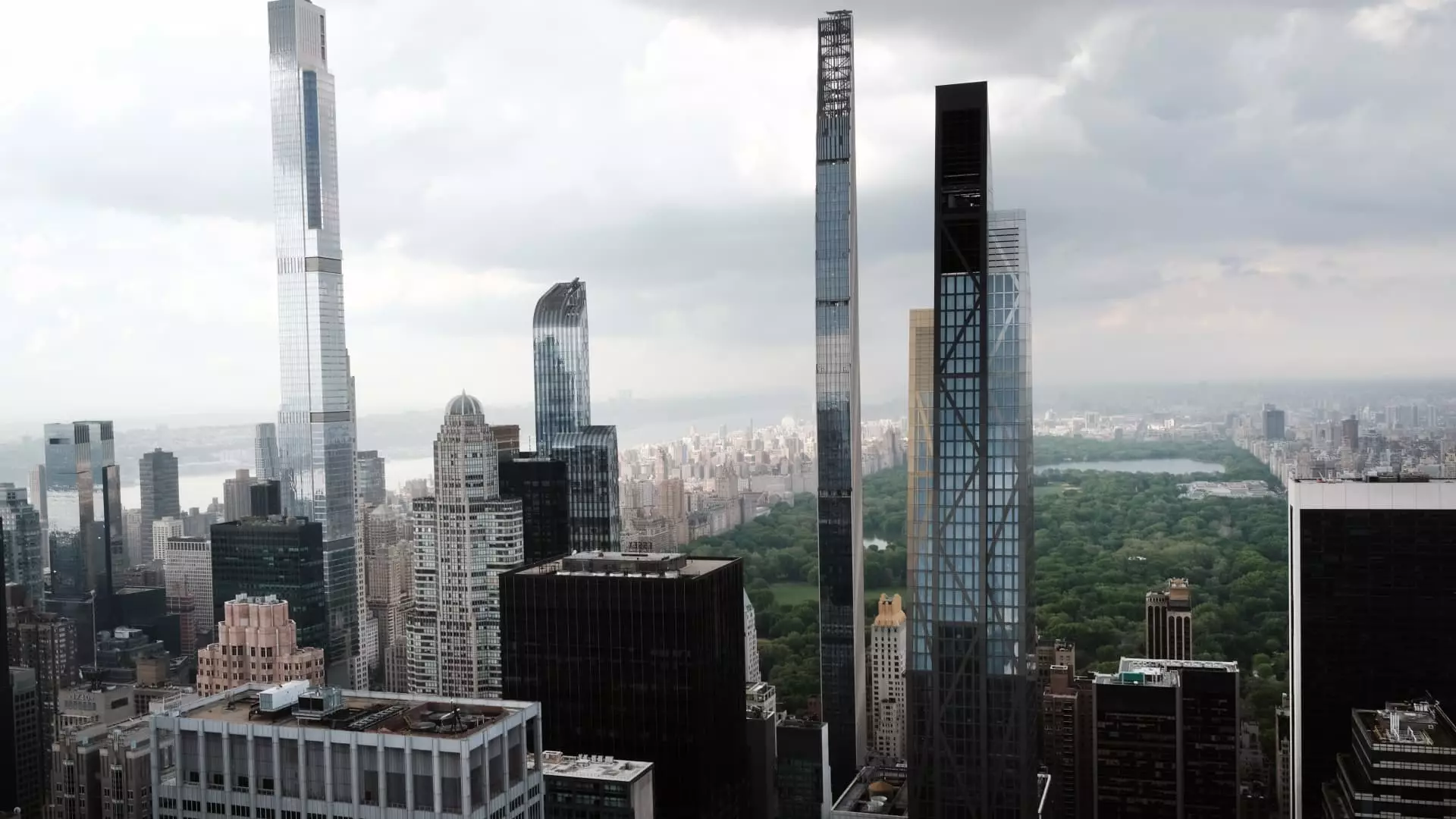In an astonishing turn of events, Manhattan’s luxury apartment market has seen a remarkable surge of 29% in sales during the first quarter, relative to the previous year. This dynamic surge, yielding a staggering total of 2,560 closed sales—up from 1,988—has drawn attention not just for the raw numbers, but for what they represent within the broader economic landscape. The real estate firm Miller Samuel, in conjunction with Douglas Elliman, highlights that amidst a backdrop of fluctuating stock markets, the affluent are seeking the safety of tangible assets in the form of high-end real estate. The total sales value soaring to $5.7 billion—a growth of 56% over last year—eminently underscores this shift, though it starkly exposes the divide between different market segments.
As the wealthy rush back into the market, propelled largely by cash-heavy transactions, one must question: what fundamentally drives these decisions? The allure of luxury properties priced above $5 million surged by 49%, indicating a kind of insular momentum. Rather than being hindered by rising mortgage interest rates—echoing the broader economic hardships experienced by the middle-class—these ultra-wealthy buyers seem unfazed, often opting for all-cash transactions that circumvent traditional financing pitfalls. Herein lurks a societal paradox: as the top tier of wealth access real estate like never before, the middle market risks becoming a forgotten realm.
The Mirage of Affordability: A Mid-Market Crisis
While glitzy sales figures dominate headlines, the underlying realities of Manhattan’s mid-market present a sharp contrast. Properties priced between $1 million and $3 million faced a 10% decline in signed contracts, leaving many to wonder what is driving this apparent stagnation. Brokers observe this exodus towards the financial abyss, suggesting that the middle class’s purchasing power is ebbing away, creating what could be described as a propitious illusion for those at the top.
This disparity is starkly embodied by the resurgence of lower-end listings, where properties priced between $500,000 and $1 million exhibit resilient performance, often appealing to first-time buyers or those with modest means. While this segment of the market demonstrates promise, it reveals a worrying trend: the foundation of Manhattan’s real estate economy appears increasingly unsteady, propped up by the sophisticated transactions of the wealthy while leaving the middle class grappling for relevance.
Many agents signal an alarming shift, where the traditional investor pool is being replaced by flocks of so-called “boomerang wealthy.” These affluent individuals, once lured away by the siren call of suburban paradises and tax-friendly states like Florida, are now returning, bringing with them a cache of wealth that continues to drive the luxury market. Yet, this return does not fill the void in the mid-market; instead, it amplifies a growing economic rift that raises serious questions about the sustainability of Manhattan’s real estate ecosystem.
The Great Wealth Transfer: A Double-Edged Sword
Compounding the dynamics of the luxury market is the so-called “great wealth transfer,” an event poised to reshape generational financial distributions. As trillions pass from older generations to their heirs, brokers report an influx of buyers who are arguably less sensitive to price fluctuations yet wholly emblematic of an economy that increasingly privileges the old moneyed class. This phenomenon raises ethical questions: is our real estate market evolving into a playground for the ultra-wealthy, one that is alienating for those who seek to find their footing?
Real estate agents and brokers observe that family offices—entities managing family wealth—are now acquiring luxury apartments as legacy assets, which not only perpetuates wealth but also reinforces a system where accessibility becomes an ever-elusive goal for the average New Yorker. Indeed, while the numbers reflect growth and vitality in the luxury sector, one cannot ignore the broader implications: a bifurcated market where affordability feels like a distant memory.
The Role of Economic Confidence and Market Resilience
Market analysts and insiders acknowledge that these remarkable trends emerge amidst a volatile backdrop, where signs of economic uncertainty linger like shadows. Despite the buoyancy in real estate sales, especially within the luxury segment—with signed contracts for $10 million-plus apartments tripling in March—these results do not escape scrutiny regarding their long-term viability. The landscape of Manhattan real estate, characterized by peaks and valleys influenced by macroeconomic policies, leaves one to ponder how sustainable this surge truly is.
As the real estate market seems to thrive, the uncertainty that permeates investment strategies persists, significantly impacting lower and mid-market segments. The resilience of high-end real estate sends mixed messages about recovery and growth, often obscuring the reality faced by those aspiring to enter this market. It is clear that while the luxurious embrace of wealth grows ever tighter, the fabric of a truly inclusive urban environment frays at the edges, valuing opulence over affordability. Herein lies a critical inquiry into the sustainability of prominence in a market that increasingly echoes the disparities of wealth and opportunity.


Leave a Reply